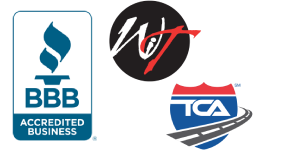Industry News & Tips for Truckers
- Details
- Written by: Kate Williams
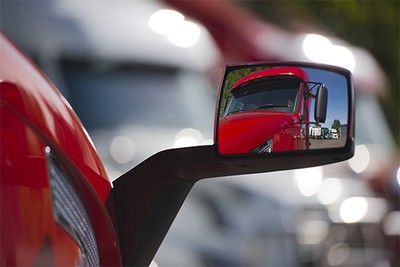 Your mirrors are one of the most important pieces of safety equipment on your truck. You already know you need to keep them clean, adjust them properly to reduce your blind spots, and stay alert.
Your mirrors are one of the most important pieces of safety equipment on your truck. You already know you need to keep them clean, adjust them properly to reduce your blind spots, and stay alert.
Currently, side mirrors are legally required in the United States; but there are now trucks on the road that don't have them. The Federal Motor Carrier Safety Administration is experimentally allowing the use of a mirrorless camera system for five years (which started December 26, 2019).
So, how do these mirrorless systems work and will they ever replace traditional mirrors?
How does the Camera System Work?
The truck is fitted with two side-view camera arms, each of which contains two cameras, one giving a narrow view and the other a wide-angle view. Another camera provides a view of the front corner of the passenger side of the cab, a well-known blind spot.
Views from the cameras are transmitted to monitors placed on either side of the cab and in the top center (where a rear-view mirror is generally located on a passenger car). The central view is the "look down" camera. Otherwise, the display monitors are close to where mirrors would be, allowing a natural transition for drivers.
The camera arms are designed to fold into the truck body if struck and are probably less likely to break than mirrors.
What are the Advantages of the Camera System?
These new camera systems are, currently, a significant investment. However, they do have a number of advantages over traditional side mirrors.
- The camera arms are less bulky than mirrors, which results in an aerodynamic improvement that saves fuel.
- Camera lenses can be designed to be "hydrophobic," meaning that water is repelled from them quickly.
- The system gives a wider field of view, resulting in fewer blind spots. The cameras are also designed to follow the wheels of the trailer in a turn, making it much easier to see properly when turning right.
- Digital "mirrors" can be programmed to adjust the field of view for different driving conditions, such as a narrower field of view to see further behind the vehicle on fast highways, or a wider one in cities where there might be cyclists and pedestrians to worry about.
- Drivers have already stated that the digital cameras work much better than mirrors in reduced visibility, especially low light.
Overall, the new technology provides flexibility that traditional mirrors do not. As it develops it may be integrated into lane departure systems or allow for digital backup projection lines, effectively providing semi-truck backup camera capacity similar to that now standard on passenger cars.
Right now, the system is still very much in development, but it is quite likely that it will become more popular, especially given the likely ROI in terms of safety and, to a lesser extent, fuel consumption.
What are the Issues with Cameras Replacing Mirrors?
The biggest issue with the system is, of course, driver acceptance. Older drivers who have dealt with regular mirrors for years may be reluctant to try the new system, and some are concerned that the monitor displays may not be as adjustable for drivers who are unusually tall or short.
Some drivers did find that there was a learning curve. As the monitors are inside the cab, they are not quite in the same place as mirrors, and drivers testing the system found that they looked outside the cab where they expected to find mirrors. Adjustment was generally pretty fast. One driver testing the system found the central location of the "look down" mirror counter intuitive.
Manufacturers and vendors would do well to seek feedback from drivers to see if the system can be adjusted in ways that make them more comfortable, and to make sure that display panels can be positioned appropriately for different body types.
The biggest concern from drivers and fleet managers is what might happen if the system breaks. Mirrors, although highly vulnerable to damage, are easy to repair and replace and, of course, do not have attached software to crash. Older drivers tend to be more comfortable with simple, physical systems rather than modern electronics.
A good amount of redundancy has been built into the system. With multiple cameras on each side, if one camera fails then the driver should be able to rely on the other. As camera prices come down, it might be possible to add even more cameras to the arm, allowing for backup cameras to cut in. The camera arms are higher on the cab and less likely to be hit by other vehicles or objects than mirrors. All of this means that the system is likely to stay reliable, and the cameras can be designed to alert the driver to non-function (such as through a blue screen) rather than just having the view freeze.
Finally, another concern is different standards across manufacturers because there is no regulatory standard. Mirrors have generally converged on one good design that a driver can easily handle. When drivers switch to another cab, they can be sure that once they have adjusted the mirrors everything will work the same. With the camera systems, it is entirely possible that there will be things like different camera locations, different display locations, etc., which could introduce a learning curve. This is a concern that could be addressed with legislation; or it might be that the learning curve is not big enough to worry about.
Younger drivers, unsurprisingly, are more willing to try the system than seasoned ones. With the current shortage of new drivers, the system's safety improvements, while likely modest, might be used to help encourage new truck drivers to enter the trucking industry.
Are Cameras Going to Replace Mirrors Anytime Soon?
As of right now, the system is going to be an expensive optional extra, but if testing shows that it does improve safety it is likely to slowly become standard, if not mandatory. Fortunately, it doesn't appear to require a lot of additional training to use, and manufacturers are being careful to introduce redundancies to ensure it works.
It also opens the door to proper tractor trailer backup camera functionality and additional safety features that could be highly useful to drivers moving forward (or, most importantly, in reverse).
- Details
- Written by: Kate Williams
 It’s no news that protecting your data and privacy is very important in today’s digital world. With the rise of electronic devices and new technologies, knowing how and what steps to take to protect your data and privacy is becoming increasingly more important within the trucking industry.
It’s no news that protecting your data and privacy is very important in today’s digital world. With the rise of electronic devices and new technologies, knowing how and what steps to take to protect your data and privacy is becoming increasingly more important within the trucking industry.
A 2019 industry study about ELD data asked drivers if they were aware of their ELD provider’s policy on data sharing. 34% had no idea on how to opt-in or opt-out of data sharing. If protecting your data and privacy is so important to truck drivers, why are drivers not aware of their ELD provider’s data protection and privacy policies? If we had to guess, it is likely due to privacy policies that are often hidden into legal terms and conditions pages filled with legal jargon that most people skip over.
So to help you understand what you can do to protect your data and privacy, we’ve created this quick guide of easy to understand steps to take to protect yourself, your data, credit, lifestyle, etc.
Choose a Phone/Tablet Provider
Since you won’t be going anywhere on the road without a mobile cellular device and it is extremely likely you’ll use your device for work (ELD, GPS, Social Media, Load boards). The first step to protecting your privacy is doing your research and choosing the best phone and/or tablet device. The two main phone and tablet providers are Apple iOS or Google Android. Both have their pros and cons but ultimately, you will need to decide which operating system you prefer.
Apple is known for protecting the privacy of its users from the moment you start the device. Facial and fingerprint recognition, 6-digit passwords and Find My device capability are all extra security features found on Apple devices. Google, although often bad-mouthed for the invasion of privacy when it comes to advertising, has a decent amount of privacy elements within their devices. However, by default Google devices are known for open privacy settings to allow for the most “ad-supporting” user experience.
Choose a Reliable and Secure ELD Provider
Electronic logging devices were mandated in 2017 and fully enforced, including all fleets running AOBRD technology, by 2019. The ELD mandate, although somewhat controversial, can be a good thing for trucking companies and fleets of all sizes. The increased use of technology can help level the playing field for managing smaller fleets and make truck driving easier.
There are several key features to look for when evaluating ELD providers such as ease of use, latest technology, and user support. Does the company offer the latest edge computing ELD technology? Edge computing is the latest ELD technology allowing faster processing and more accurate data to be transmitted to the fleet management database. This type of technology can help protect against inaccuracies within ELD systems.
Where is your ELD data stored and how do you access your data if needed? Does the company intend on selling your data? An even bigger question, who owns the ELD or Fleet Management company? Did you know that Google, AT&T, Verizon, are all in the ELD space? These are all good questions to ask your ELD provider when trying to ensure your data is protected.
Avoid and Be Aware of Phishing Schemes
Phishing and hacker schemers are not only in trucking. Obviously, there are petty cybercriminals who prey on people’s data daily all across the internet. Cybercriminals are getting better at masking their schemes. Most recently, the internet saw an increase in Covid-19 related hacker schemes. These hackers use emails laced with clickbait and malicious software to entice users to click off a safe email into a phony website that can ultimately steal your information.
Not only are schemers and criminals online, but they have also infiltrated spam phone and SMS text messaging. Depending on the type of phone and your phone provider, you may notice calls coming in as “Spam Risk.” This has been very helpful in identifying robocallers and protecting personal information. If you are receiving a high volume of robocalls, the best way to stop these unwanted calls is to block and report the caller. If you receive a call from an unknown number or blocked caller id, be extremely cautious when answering the call.
Be Educated on Dashcams
Dashcams are another technology that are both beneficial and controversial in the trucking industry. On one hand, a dashcam can save your business by holding other drivers responsible for their reckless driving behavior as well as validate your safe driving behavior. On the other hand, cab-facing cameras can be seen as invasive. The most important questions when implementing new technology are, first, how and where is the video from the dashcams being stored? And second, how is the dashcam footage going to be used?
Courts have ruled that dashcams are not an invasion of privacy. The driver’s privacy is at risk only if the company is using the camera footage without the driver’s knowledge - this is a problem! It is best practice to be aware of how your company is using driver-facing camera footage and demand transparency in terms of dashcam policies. Dashcams can be a great tool for driver training, alerting, and accountability if implemented securely and respectfully.
Your data (HOS logs, dashcam video, internet browsing history, etc.) is just that, YOURS. Be sure to take precautionary measures to protect your data and privacy.
- Details
- Written by: Kate Williams
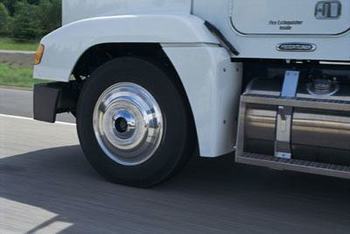 The hard-working men and women of the open road may be pleased to know that an independent trucker took his fight for fair wages all the way to the U.S. Supreme Court and beat a Missouri trucking giant.
The hard-working men and women of the open road may be pleased to know that an independent trucker took his fight for fair wages all the way to the U.S. Supreme Court and beat a Missouri trucking giant.
That unanimous Supreme Court win forced New Prime to settle a class-action lawsuit on behalf of truck drivers for full, fair compensation to the tune of $28 million. The victory now sets that plate for underpaid trucking professionals to get compensated for every hour they log, whether in-service hours or not. Supporting fair wage practices and truck driver opportunities that offer good salaries is the cornerstone to keep good moving across America.
What Truckers Need to Know About Oliveira v. New Prime
When New Prime refused to pay Dominic Oliveira and his fellow independent truckers for every hour they worked instead of miles logged, he filed suit that this practice was inherently unfair. Experienced truckers understand that road construction, traffic patterns, weather, and non-driving tasks can significantly reduce the miles versus hourly wage ratio.
For example, a 2016 DAT study indicates that truckers can spend more than three hours on average waiting for trailers to be unloaded and loaded. And low detention fees have been a bone of contention between CDL professionals and freight companies. If you are getting paid by the mile, such downtime undermines your efforts to increase take-home pay.
The major issue between truckers and New Prime was the corporation’s alleged misuse of an arbitration clause to settle disputes. CDL holders such as Oliveira felt that they were not reasonably compensated for the time when the wheels weren’t rolling. At issue in the Oliveira case were non-mileage requirements New Prime imposed but declined to compensate truck driving professionals.
“Plaintiffs filed this lawsuit on March 4, 2015, alleging that Prime has failed to compensate its truck drivers as required by the Fair Labor Standards Act and, as to classroom orientation in Missouri, as required by the Missouri minimum wage laws and common law,” the lawsuit reportedly stated.
Under the standard set by the U.S. Department of Labor, “any work which an employee is required to perform while traveling must, of course, be counted as hours worked.”
Only after the high court sided with Oliveira, New Prime decided to settle the wage dispute with upwards of 40,000 mostly independent truck drivers. But a trend of fair wage lawsuits positions the Oliveira win and massive settlement as the cornerstone of a movement to improve truck driver salaries across the board.
“Considering the continuing efforts of mega-carriers to thwart the rights of drivers, the decision is an important one for protecting the rights of interstate drivers to have their claims heard publicly and in a collective fashion,” truck driver employment attorney Justin Swidler reportedly said.
In California, a federal court ordered Walmart to compensate drivers for previously unpaid rest breaks. If the Ninth Circuit Court of Appeals’ decision holds up, Walmart could be on the hook for upwards of $54.6 million in trucker backpay. What is almost ironic about the Walmart case is that the retailer earned a reputation for paying its 9,000-strong fleet drivers famously high wages.
“We continue to believe that our truck drivers are paid in compliance with California law and often in excess of what California law requires,” a Walmart spokesperson reportedly said. “We are proud that our drivers are among the best paid in the industry, earning, on average, between $80,000 to over $100,000 per year.”
In many cases, Walmart drivers are making approximately double the national average for CDL holders. The U.S. Bureau of Labor and Statistics reports that heavy and tractor-trailer drivers earn a median of $45,260 per year and $21.76 per hour. Still, truck drivers are required to take a 30-minute break during work hours and cannot exceed 11 hours per day.
Why Oliveira Fair Wage Lawsuit Matters to Truck Drivers
It’s easy to shrug off Walmart drivers getting a bump in their already big take-home pays. But the vast majority of truck drivers earn a reliable annual salary after putting in hard work. Compensation for downtime, required orientation, truck inspections, mandated 30-minute breaks, and other non-driving tasks can certainly make a difference in paying the bills.
But what may be even more essential is the impact this legal trend could have on truckers at the lower end of the economic scale. Wins by Oliveira and the pushback on Walmart in California could very well have freight-hauling and logistics organizations ponying up now rather than face civil lawsuits.
“It could tip the scale in favor of the driver. For those that do potentially launch action against a trucking company, a precedent has been set already, and they could refer to this,” Logistics Trends & Insights president Cathy Roberson reportedly said. “In a way, it’s almost like a wake-up call.”
It’s vital for those considering a career as a CDL professional to understand this tends to be a pay-your-dues type of industry. Although newly-minted drivers can make good salaries right out of truck driver training school, wide-reaching factors can impact your weekly paycheck. These include the following.
- Mileage: Over-the-road (OTR) drivers typically bring home excellent salaries even when working at a cent-per-mile rate. Owner-operators can negotiate rates and often top $100,000 annually. Local positions under these same conditions may not deliver top-tier incomes and may be considered steppingstone jobs.
- Local Routes: Truckers that opt for local positions are often at the lower end of the income scale. Veteran drivers who have already banked big annual money often fill these positions in order to go home from work each night. Local trucking jobs are also excellent opportunities for newer drivers to gain experience before applying for big-money positions.
- Location: Where you start your truck driving career will have an impact on income. Some states offer higher wages than others. It’s essential to consider applying for jobs in high-paying areas.
- Endorsements: While there is more expense, time, and effort associated with obtaining CDL endorsements, truck drivers who have the ability to haul more specialized freight do command a higher wage to compensate for the added risk and responsibility.
Truck drivers working in low-wage economies or for trucking companies that are notoriously poor payers may be positively affected by the Oliveira and other pro-trucker court decisions. For instance, an Arkansas court ruled that drivers must be paid at least minimum wage for every hour they are not sleeping. That meant one corporation had to compensate truckers for 16 hours per day. In Nebraska, student drivers won a case for fair compensation, and major carriers have been forced to pay back wages into the millions.
The important takeaway from Oliveira and judges who support truck drivers is that wages will continue to rise for newly-minted CDL holders, as well as those at the top-end of the scale. The Bureau of Labor and Statistics notes that trucking industry wage growth is expected to be at least 5 percent annually, and nearly 100,000 drivers are expected to be needed to fill vacant truck driving jobs, creating huge opportunities for those in the trucking industry.
- Details
- Written by: Kate Williams
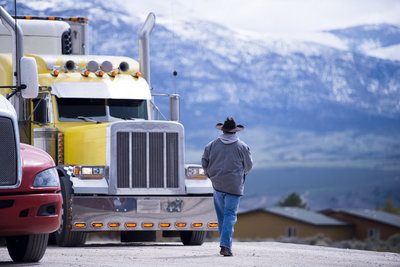 A truck driving job requires you to be away from home for sometimes weeks at a time. You may be on the road for up to 14 hours at a stretch. Once you arrive at your destination, you may have to wait several more hours for your truck to be unloaded or reloaded.
A truck driving job requires you to be away from home for sometimes weeks at a time. You may be on the road for up to 14 hours at a stretch. Once you arrive at your destination, you may have to wait several more hours for your truck to be unloaded or reloaded.
If you are new to trucking, you may wonder how you are going to fill all that time. Hobbies for truckers present an opportunity for you to pursue your interests and possibly improve yourself, even when you’re on the road for days or weeks at a time. There are truck driver hobbies that you can indulge in during rest breaks and even a few that you can do safely in the cab while driving.
Hobbies for Rest Breaks
As a truck driver, you are required to take long rest breaks. While sleeping should be a priority, it may not occupy all your downtime.
1. Collections
Cross-country driving gives you the opportunity to purchase souvenirs. Driving a truck allows you the opportunity to start a cool collection. Picking up something interesting or unique from every place you visit is a good way to keep track of where you have been, or you can collect something that holds particular interest for you. Coins and stamps are popular choices. It doesn't have to be something large, fancy or expensive; what's important is that it has personal meaning for you.
2. Arts and Crafts
Some truck drivers like to use their downtime to pursue the creative arts. Keep simple art materials in your truck, and you can try your hand at sketching or painting. A craft such as knitting allows you to make something that is not only beautiful but practical as well.
Some drivers may scoff at learning a "girly" skill like knitting, but it is a relaxing way to unwind at the end of the day, the required materials are easily portable, and you can make something like a sweater or a blanket that you'll be glad to have during cold winter nights in your truck.
3. Writing
Some people are more verbal than they are visual. If this is the case, you can express yourself through writing. You may keep a journal of your experiences on the road or try something that requires a bit more imagination, such as poetry or short stories.
4. Music
Some drivers entertain themselves by playing a musical instrument. If you do not yet know how to play an instrument, now may be a perfect time to learn. Taking lessons from a local instructor is possible but may not be practical. You need to find an instructor who is flexible enough to work around your work schedule when giving you lessons.
A better option may be to take advantage of the many resources available online, such as video tutorials. These resources allow you to learn an instrument on your own terms.
5. Exercise
Driving a truck keeps you sedentary for hours at a time. Rest breaks are an opportunity to get some exercise, which helps to keep you healthy and prevent you from gaining weight. You do not have to perform a workout that is long or intense. You can reap significant benefits from just a 30-minute walk every day.
In or around the cab, during rest breaks, you can perform push-ups, sit-ups, or lunges. A couple free weights don't take up much room and allow you to get in a little strength training.
Things to Do While Driving
Obviously, you are limited in the hobbies you can pursue while driving. You have to keep your hands on the wheel and your eyes on the road at all times. However, as long as your ears and your thoughts are free, there are still hobbies that you can pursue safely while behind the wheel of your vehicle.
1. Audiobooks
You may not have time to pick up a book and read following your driving shift. Fortunately, there is a vast library of audiobooks available in a number of formats, allowing you to choose the genres and authors that appeal to you the most. On average, an audiobook takes about 10 hours to listen to. Therefore, you may want to stock up on multiple titles before you leave because one audiobook can be completed in approximately one shift.
2. Podcasts
A podcast is like a talk radio broadcast that you can listen to on demand. Podcasts can be informational, entertaining, or a combination of both. You can find podcasts on almost any subject, and because podcasters are trying to reach a specific audience of enthusiasts, they often delve very deeply into the topic. For example, if you're interested in developing your career, you may benefit from listening to podcasts specifically about the trucking industry.
3. Language Programs
It can be useful to learn a second language, especially when your job takes you to so many different areas of the country. Bilingualism also helps improve critical thinking skills and memory. Audio language-learning programs are available to help you become bilingual while you drive your truck.
Always be careful while pursuing truck driver interests behind the wheel to ensure you do not become distracted. Observe all traffic laws and be sure to give the road the critical share of your attention.
- Details
- Written by: Kate Williams
 The Fourth of July is arguably one of the most anticipated holidays in the country. It's a time for Americans to come together to celebrate their heritage, the nation's founding history, and their independence.
The Fourth of July is arguably one of the most anticipated holidays in the country. It's a time for Americans to come together to celebrate their heritage, the nation's founding history, and their independence.
People across the U.S. usually travel during the holiday to attend events or celebrate with friends and family. According to Travel Agent Central, 41.4 million people planned to travel by automobile in 2019, with drivers facing delays up to four times the regular commute. Another 1.9 million people planned road trips and other holidays during the same period.
The high number of motorists on the road increases the risk of traffic accidents and incidents. Despite these risks, truckers must still do their jobs and get to their destinations as planned, which is why we have compiled the following list of safe driving tips when traveling during this busy holiday.
Safety Tips for Driving During the Fourth of July Holiday
Plan Your Route
As a trucker, whether local, regional, or over-the-road (OTR), you must always look for the best possible route to take you to your destination safely and on time. Often, depending on the day, some roads are better than others. During the fourth of July holiday period, try and avoid busy highways and streets that might have a lot of traffic.
Even though you may have to drive some extra miles, rest assured that the detour may either help you save time, go a safer route that's less crowded, or both. Remember that you cannot always avoid traffic because most people are traveling during that period, but it's best to look at your itinerary to see if you can find a better route.
Give Yourself Plenty of Time
Traffic creates safety hazards and can lead to delays in your route. Always give yourself plenty of time to navigate through the holiday traffic to reduce stress and make your deadlines safely. It's best to leave earlier than usual if possible when driving over the Independence Day holiday.
By leaving early you can drive responsibly, keep your mind focused on your route, pay attention to traffic conditions, beat traffic in and around major cities, and not worry about missing your deadline.
Watch Your Speed
Speed kills all year round, but especially during busy holidays. If you find yourself outpacing other motorists, slow down. Likewise, slow down whenever you approach or drive in areas with families or large groups of people. It's also a good idea to keep a safe following distance to give yourself time to make adjustments as needed.
Always Check Your Mirrors
During heavy traffic conditions, pay special attention to four-wheel drivers because they will often be in and out of your sight and blind spot. The truth is that there are numerous irresponsible motorists on the road, and as a trucker, you must hold yourself to a higher standard than other road users.
Part of this includes always being aware of your surroundings and using your mirrors to ensure no one moves into your blind spot without you noticing.
Use Your Turn Signal Excessively
Truckers need to drive better than the average motorist, especially during busy holidays. Hence, it is best always to use your turn signals in advance to indicate any lane change. Motorists tend to make rash driving decisions, especially on busy highways, such as passing on the right side or staying in truckers' rear blind spots.
Using your turn signal gives other drivers a chance to notice your intentions early and hopefully make proper adjustments. Even if they do not move immediately, be patient, and remain on your lane. Road safety should always be your top priority.
Limit Distractions
Due to the increased traffic and unpredictability of other motorists, it's best to remain focused on the road. Avoid eating or drinking while driving. It only takes a moment of distracted driving (i.e., opening a bag of chips) to lead to unprecedented consequences.
Pay Attention to the Weather
The weather can change quickly in different parts of the country, even during the summer. Whether you drive locally or OTR, it is always best to pay attention to the weather forecast before you set out. It's no fun driving through inclement weather, and it can be quite dangerous.
Maintain Your Truck
Summertime can take a toll on your truck, so it is best to ensure that your rig is well-maintained before setting out. Check your tire pressure to avoid blowouts, and your brakes to ensure they work correctly. The summertime heat usually deflates tires easier and causes brakes to fade faster. The last thing you want in heavy traffic is a failing brake system.
Drive Smart and Stay Safe
Remember, staying alert and implementing simple safety procedures on the road can make a huge difference for you, your truck, and other motorists. These safety tips not only apply to the Fourth of July holiday period but all year round.
- Details
- Written by: Kate Williams
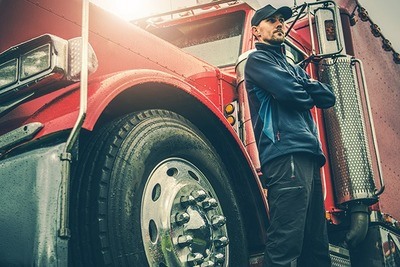 Truck drivers earn good salaries without taking on the financial burden of student loans associated with a 4-year college degree. With minimal training costs to earn a Commercial Driver’s License (CDL), men and women from all walks of life enjoy steady work and tremendous job security.
Truck drivers earn good salaries without taking on the financial burden of student loans associated with a 4-year college degree. With minimal training costs to earn a Commercial Driver’s License (CDL), men and women from all walks of life enjoy steady work and tremendous job security.
But not everyone is well suited for a trucking driving career. Employment statistics indicate that upwards of 35 percent of truckers quit within the first 90 days. The vast majority of those who exit the professional typically do so within the first year. Although not everyone finds the lifestyle a seamless fit, there are approximately 200 million CDL professionals and the industry grows by nearly 100,000 annually. Still, a significant truck driver shortage persists, making this one of the most secure jobs in the nation.
That being said, those considering a truck driving career need to have in-depth knowledge and a complete understanding of what it takes to be a trucker before getting behind the wheel of a big rig. We believe that potential candidates should have as much information as possible to make an informed decision about working as a truck driver. Reviewing information about trucking companies hiring and their job descriptions is the first step and can prove valuable in your job hunt.
What Does A Truck Driver Do?
Narratives about the Great American Trucker paint an iconic picture of women and men who drive thousands of miles to deliver goods and materials vital to our communities. The pandemic illustrated just how essential truck drivers are to the nation. Without them, food shortages would result, and supply chains for many goods would completely break down.
But the issue confronting those who are considering a good-paying truck driving job is that a sense of purpose will carry you only so far. Until the spotlight was shined on professional CDL holders, many felt underappreciated for taking on a sometimes challenging lifestyle. Understanding what will be expected of you can help narrow the gap between the idea of trucking and daily realities. These are items worth considering.
- Truck drivers can expect to log between 2,000 and 3,000 miles weekly
- Truck drivers typically put in 70 hours of service over eight days
- Trucker drivers can anticipate being away from home for weeks
It’s not uncommon for those new to the field to begin careers as over-the-road (OTR) drivers. Like other occupations, truck drivers need to work their way up through the industry. An OTR driver takes on long-haul runs and may be away for 2-3 weeks at a time. This lifestyle change has been the primary reason why some people exit the profession early. If you are considering a truck driving job, consider the possibility that you could be on the road for extended periods, particularly early in your career. It’s also important to understand that truck driving opportunities can be broken into the following types.
- Company Drivers: This type of truck driver works for one company and hauls products and materials. Fleet drivers have seen a rise in salaries in recent years with major retailers offering benefits for regional drivers.
- Owner-Operators: After gaining experience, truck drivers with an entrepreneurial streak often buy their own vehicle. They earn a higher living and are able to negotiate rates with freight hauling companies.
- Independent Contractors: Some truckers build a small stable of vehicles and work with companies to deliver merchandise and materials. This hybrid occupation makes the trucker part owner and part driver.
Although a certain percentage of newly minted CDL holders prematurely leave the field, opportunities for higher-earning, ownership, and improved lifestyle hours typically increase with experience. Simply put, beginner truck drivers have to pay their dues to get to top-earning positions and improved quality of life brackets.
What Skills Does a Truck Driver Need to Learn?
Driving a tractor-trailer is completely different from passenger vehicles, even reasonably powerful 4X4 trucks. Truck drivers must remain aware that traversing roadways must be managed differently. For example, pickup truck drivers can negotiate steep inclines and declines with little worry. But a loaded big-rig operator must utilize brakes in a fashion that they don’t overheat, and handle turns without shifting loads.
The skills necessary for controlling 80-feet of truck and trailer that weighs upwards of 30 times more than a car requires hyper-vigilance. Along with learning how to best use 9-18 gears, a CDL professional would be well-served to acquire the following skills
- Learn to Shift an 18-Speed Transmission
- Learn to Double Clutch
- Learn to Shift without Clutch, aka “Floating Gears”
- Learn to Use a Jake Brake
- Learn Mountain Driving Skills
- Learn Severe Weather Driving Protocols
- Learn to Secure the Fifth Wheel
- Learn to Back into a Loading Dock
- Learn to Pin-Up Your Trailer
- Learn to Use Axle Weights Properly
- Learn to Conduct a Pre-Trip Vehicle Inspection
- Learn to Make Wide Turns
The good news for those considering a CDL career is that all of these skills are generally taught in truck driver school. Federal law does require CDL professionals to meet hearing thresholds and those with potentially risky health conditions such as epilepsy may not be able to gain a CDL. The industry also monitors alcohol and drug abuse and drivers suspected of being under the influence can be required to submit to testing.
How Long Does it Take to Become a Truck Driver?
On average, it takes about seven weeks for someone to earn their CDL when making a full-time commitment. Tractor-trailer schools typically require 40 hours of your time, five days per week, for in-class education and behind-the-wheel experience.
Requirements, and therefore your time investment, differ slightly from state to state. There are usually part-time options and financial aid resources available to secure a CDL. Tuition costs also range from about $3,000 to $7,000 depending on the state. Of course, that cost pales in comparison to 4-year degree tuition costs that often leave graduates saddled with student loan debt for years. Most CDL schools accept the G.I. bill and work assistance funding for unemployed people.
It’s also worth considering that many trucking schools work with major trucking companies. Immediate placement can ensure prompt employment. Also, select companies may include sign-on bonuses that cover a part or all of your initial truck driving school investment. In terms of turnaround, someone can enter a truck driver training school for $7,000 or less and secure a job making $40,000 or more in less than two months. Financially speaking, that’s a pretty good deal.
What is the Truck Driving Lifestyle Like?
There seems to be a great deal of talk about the trucking lifestyle and its rigorous nature. For many who want to maximize their annual incomes, there’s no shortage of truck driving jobs in the U.S. If you want to go hard and work the maximum allowable hours under federal regulations, you can log hours of service for up to 11 hours per day, followed by 34 hours off. It’s not uncommon for OTR drivers to crisscross the U.S. and North America non-stop and put in upwards of 500 miles daily. These are common lifestyle experiences of hard-working truckers.
- Downtime: Many drivers sleep in their rigs or check into inexpensive motels during their mandated hours off. Experienced drivers who secure regular routes often find favored places for off-time. For example, truckers who run oil from Canada to Texas enjoy Gulf beaches and camping on their off days.
- Eating Habits: Too many truck drivers fall into a poor habit of eating fast food and at truck stops. Experienced drivers learn to shop for healthy options, carry coolers, and meal warming technology.
- Loads: Most professional drivers do what is known as “drop and hook.” This involves leaving a trailer at a loading dock and picking up another for transport. In some cases, operators may also be tasked with unloading.
It may be prudent to begin a career as a truck driver by taking advantage of flexible shift opportunities. In many cases, OTR drivers can choose to begin runs during the morning or overnight. If you are concerned about the rigors of being on the road and away from home for weeks, seeking a less strenuous position may be in your best interest. Although this pathway may limit some of your opportunities, it may be more important to sustain a long career rather than suffer early burnout.
Is the Truck Driving Life Right for You?
Plenty of people enter the trucking profession because it offers high rewards with only modest investment. Truckers earn an average salary of 45,260 per year, more than $21 per hour, and experienced drivers can pull down upwards of $100,000. When you consider a CDL can be earned for about $7,000 in under two months, entering the field seems like a no-brainer.
But being away from home and the responsibility that comes with hauling almost 80,000 pounds at high rates of speed can take a toll. That’s why men and women considering a good-paying career as a truck driver would be wise to consider whether you view being on the road as extended isolation or a new adventure each and every day.
If you have an adventurous spirit and want to get paid well to see the country and help keep America’s supply chains open, visit CDLjobs.com for more information and career opportunities.
- Details
- Written by: Kate Williams
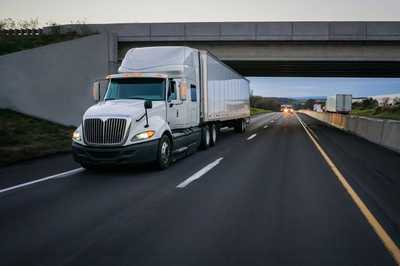 If you like truck driving but prefer to stay closer to home, a regional driving job may be a good fit for you. Many regional drivers get weekends at home and more time with family and friends. A regional route is often consistent, with truckers driving the same route on a weekly or monthly basis.
If you like truck driving but prefer to stay closer to home, a regional driving job may be a good fit for you. Many regional drivers get weekends at home and more time with family and friends. A regional route is often consistent, with truckers driving the same route on a weekly or monthly basis.
Not as limiting as local routes, regional routes can be a happy medium between local and OTR trucking jobs. Midwest regional trucking jobs are particularly appealing as they cover a large section of the country.
The boundaries of a regional trucking jobs vary from company to company. Some companies have a fixed mile limit that you can drive from your home base, while others may provide predetermined routes or states. Most companies offer guaranteed home time, frequently in the form of five days of driving during the week and weekends off. Occasionally weekend deliveries may be required.
Top Midwest Regional Trucking Companies
There are dozens of trucking companies, from nationally known names to small family-owned operations. Some focus their business on the warmer, more arid southern half of the Midwest, while others have their drivers in the snow and ice of the northern great plains. Do your research and choose the one that meets your needs. Here are some of the best in the Midwest:
Bay & Bay Transportation. In business since 1941 and based in Eagen, Minnesota, Bay & Bay Transportation has drivers that cross from southern Minnesota down to Texas and east to southern Maine. They have regional, OTR, and local positions. An asset-based carrier with their own fleet of 500 trucks, they also serve as a Third Party Logistics Provider. There is a pet and rider program in place and a no forced New York City dispatch policy.
Paschall Truck Lines. Based in Murray, KY, Paschall Truck Lines is a 100% employee-owned trucking company and has the highest-paid training in the trucking industry. Consider their Midwest Regional opportunities offering great pay, home on the weekend, and lots of drop & hook freight, so you spend more time on the road earning and less time waiting at shippers.
Weinrich Truck Line. Western Iowa-based, Weinrich Truck Line is a specialized food grade carrier now hiring experienced Class-A CDL tanker drivers for high-paying truck driving jobs in the Midwest.
Ready to Find a New Trucking Job?
If you are looking for a Midwest regional truck driving job, CDLjobs.com is your one-stop resource. Simply apply today, and watch the offers roll in from trusted trucking companies around the country. If you’re looking to work at a Southeast regional trucking company, there are many openings in that region as well.
- Details
- Written by: Kate Williams
 Truck drivers once ranked among America’s unsung heroes. Until the pandemic put the men and women who deliver the goods and materials that keep communities afloat, little attention was paid to the stress, anxiety, and conditions that chip away at truckers’ mental health.
Truck drivers once ranked among America’s unsung heroes. Until the pandemic put the men and women who deliver the goods and materials that keep communities afloat, little attention was paid to the stress, anxiety, and conditions that chip away at truckers’ mental health.
The shuttering of rest areas, bathrooms, motels, and other truck driving infrastructure during the pandemic raised alarms about excessive hardships faced by CDL professionals. But long after the U.S. economy reopens and normalcy returns, truckers will continue to do an essential job that justifies far greater attention to mental health and wellness.
Trucker issues must remain in the national conversation, and drivers should get the support they deserve.
Mental Health Disorders Suffered By Truck Drivers
It’s an open secret that the truck driving landscape lends itself to isolation, uneven sleep, and forces CDL professionals to operate a vehicle weighing upwards of 40 tons in a constant state of hyper-vigilance. Couple those realities with being away from loved ones and general companionship for extended periods of time, and you have a perfect storm for impacted mental health and wellness.
The National Center for Biotechnology Information (NCBI), a branch of the National Institutes of Health (NIH) conducted a study of 316 truckers operating within a 100-mile radius of Greensboro, North Carolina. Providing drivers — ranging in age between 23 and 76 — with a confidential survey comprised of 82 questions, the health organization’s finding did not surprise what industry insiders already suspected.
- 27.9 percent struggled with loneliness
- 26.9 percent suffered some form of depression
- 20.6 percent indicated problems associated with chronic sleep disturbances
- 14.5 percent had symptoms of anxiety
- 13 percent identified other emotional problems
“Professional truck drivers work in stressful conditions that favor unhealthy lifestyles and medical disorders. Their overall health, and especially their mental health, is very often worse than the general population as a consequence of long driving shifts, disrupted sleep patterns, chronic fatigue, social isolation, compelling service duties, delivery urgency, job strain, low rewards, and unsystematic medical control,” an NCBI report states.
Although professional drivers average an annual salary of more than $45,000 and many experienced fleet drivers earn over $80,000, the rigors of trucking underscore the reason why the country has a long-standing workforce shortage. Organizations such as the American Trucking Associations report that the driver shortage swelled to 60,000 in 2018. The Bureau of Labor and Statistics ranks heavy and tractor-trailer truck drivers among the high growth occupations year over year. While job security will certainly not be an issue for qualified CDL drivers, unnecessary stressors must be addressed to help attract drivers and allow them to enjoy healthy, productive careers.
 Recognizing the telltale signs that truck drivers are experiencing a decline in mental health and wellness has been something of a challenge. Trucking culture has long-standing ground rules that drivers possess a tough-as-nails mentality. “The trucking industry work environment emphasizes stoicism, independence and emotional control which favors symptoms of low mood or distress (anger, risk-taking, memory and concentration deficit, anxiety, depression, insomnia),” an NCBI report states.
Recognizing the telltale signs that truck drivers are experiencing a decline in mental health and wellness has been something of a challenge. Trucking culture has long-standing ground rules that drivers possess a tough-as-nails mentality. “The trucking industry work environment emphasizes stoicism, independence and emotional control which favors symptoms of low mood or distress (anger, risk-taking, memory and concentration deficit, anxiety, depression, insomnia),” an NCBI report states.
That industry attitude may have been born out of necessity, given the rugged nature of trucking jobs, but it also results in drivers masking stress and creates a self-care barrier. That’s why it’s essential for truck drivers, fleet supervisors, and other trucking industry professionals to remain mindful of symptoms.
These are common warning signs, according to the National Alliance on Mental Illness (NAMI).
- Feeling excessively sad or low
- Confused thinking or problems concentrating and learning
- Extreme mood changes, including uncontrollable “highs” or feelings of euphoria
- Prolonged or strong feelings of irritability or anger
- Avoiding friends and social activities
- Difficulties understanding or relating to other people
- Changes in sleeping habits or feeling tired and low energy
- Changes in eating habits such as increased hunger or lack of appetite
- Changes in sex drive
- Difficulty perceiving reality (delusions or hallucinations, in which a person experiences and senses things that don’t exist in objective reality)
- Inability to perceive changes in one’s own feelings, behavior, or personality
- Abuse of substances like alcohol or drugs
- Multiple physical ailments without obvious causes (such as headaches, stomach aches, vague and ongoing “aches and pains”)
- Thinking about suicide
- Inability to carry out daily activities or handle daily problems and stress
- Intense fear of weight gain or concern with appearance
Although NAMI points out that one or more of these potential mental health symptoms may not necessarily mean someone has a severe condition, it’s critical to seek support. This has, traditionally, presented a substantial challenge for truckers who buy-in to a culture that places a high value on mental toughness and self-reliance. Few would dispute that by virtue of hauling goods and materials over thousands of miles in adverse conditions automatically qualifies CDL holders as resilient. But industry insiders - including freight hauling organizations - are tasked with dispelling myths truckers do not face the same mental health challenges as other workforces.
What Trucking Companies Can Do To Improve Mental Health Support
It’s important to note that the trucking industry does not necessarily require a radical culture shift. But the time of ignoring significant problems must end if truck drivers are to enjoy the personal rewards of a job well done. Trucking companies may not be able to alter roadway infrastructure, but they can make a difference. These are ways trucking companies can help reduce mental health problems.
Remain Open To Co-Pilots
Social isolation contributes to the leading mental health issues suffered by truckers — loneliness and depression. Truck drivers are often expected to go entire weeks away from friends and family members, sleep at rest areas, truck stops, or alone in roadside motels. This is an absolute recipe for diminished wellness. When trucking companies are flexible about their rider program policies, allowing truckers to have a co-pilot or a spouse who signs off on a waiver, long-term solitude can be eliminated. Many trucking organizations are hesitant to allow third parties in rigs. But flexible companies are more likely to see greater driver retention and less burnout. They’re also doing the right thing in terms of mental health.
Check For Sleep Apnea
The NCBI reports that 20.6 percent of drivers struggle with sleep disturbances. But a study backed by the American Trucking Associations and FMCSA found that upwards of 28 percent of truckers suffered from at least mild sleep apnea. This physical disorder places undue mental health stress on drivers. The study identifies the following telltale signs.
- Loud snoring
- Morning headaches and nausea
- Gasping or choking while sleeping
- Loss of sex drive/impotence
- Excessive daytime sleepiness
- Irritability and/or feelings of depression
- Disturbed sleep
- Concentration and memory problems
- Frequent nighttime urination
Trucking companies have the ability to publish these warning signs and enforce sleep apnea screenings. Many believe it would be in the long-term benefit of its driving force for them to do so.
Encourage Homestyle Comforts
Drivers may not be able to sleep in their own bed after hours of service, but companies that allow and encourage meaningful personal items provide some level of comfort. Quality bedding, blankets, pillows, and other items from home, may reduce loneliness by providing a sense of comfort and connectedness.
Mental Health Resources For Truck Drivers
Being on the road does not mean truckers are cut off from reliable mental health support systems. Wireless technology allows drivers to work with private therapists via apps such as Face Time, Zoom, and other video conferencing platforms. Having a professional to discuss mental health and challenges while on the road can make a substantial difference in terms of wellness.
It’s also important to consider national resources such as the National Suicide Prevention Lifeline at 800-273-8255 for emergency support. This resource can connect struggling drivers with specialists familiar with what you may be going through. These may include counselors who work with veterans, grief, substance abuse, and people of faith, among others. There are also vast online support systems and locators that can be accessed with a Google search.
Professional truck drivers made a Herculean effort to keep America’s food supply chains open and deliver essential products during the time of the pandemic. Truckers are no longer unsung heroes, and our valued women and men of the road deserve quality care and improved conditions.
- Details
- Written by: Kate Williams
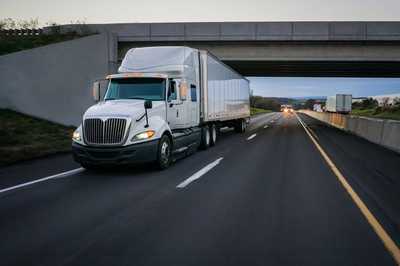 American truck drivers have felt an uneven impact due to the COVID-19 crisis. There are trucking companies that cannot keep up with shipping demands and desperately need more qualified CDL driving professionals behind the wheel. At the other end of the spectrum, many non-essential products aren’t moving, and companies have jettisoned hundreds of seasoned truckers.
American truck drivers have felt an uneven impact due to the COVID-19 crisis. There are trucking companies that cannot keep up with shipping demands and desperately need more qualified CDL driving professionals behind the wheel. At the other end of the spectrum, many non-essential products aren’t moving, and companies have jettisoned hundreds of seasoned truckers.
To say these are challenging times for truck drivers, and everyday people alike, would be something of an understatement. But Americans have learned a valuable lesson that the very survival of our communities depends on the men and women of the road traveling thousands of miles to deliver food, medicine, and other essentials. During these challenging times, CDLjobs.com continues to be a news and employment resource for our valued truckers.
Freight Hauling Industry Struggles with COVID-19 Disruption
With the economy mostly shuttered, consumer goods volume plummeted. Truckers working with carriers servicing non-essential retailers or working container ports have been largely stung by the economic downturn. Others have never seen such opportunity as the federal government has rolled back hours of service limits and leaned on hard-working truckers to buoy the nation.
“If you’re a carrier engaged in grocery deliveries or in the medical supply chain, you have been busy,” American Trucking Associations (ATA) spokesman Sean McNally reportedly said. “If you’re a carrier that hauls primarily fuel or to manufacturing centers, you are seeing anything from a slowdown to a cratering of demand.”
Shippers Transport Express, a Carson, California-based freight hauler, felt the brunt of the coronavirus back in February. The freight company laid off 145 of its unionized drivers via text message, according to the Los Angeles Times.
Containerized freight stemming from trade with China accounts for upwards of 40 percent of goods and materials flowing into the Los Angeles and Long Beach ports. The sister ports suffered a massive plunge of more than a half-million containers each month with China manufacturing mostly closed and few American consumer outlets open.
“The overall impact is not only on the regional economy, it is on the national economy,” Port of Long Beach executive director Mario Cordero reportedly said. “We are ground zero for Asian imports. We were already down because of the trade war. With the coronavirus, we’ve gone from uncertainty to potential chaos.”
But with some regions and sectors suffering downturns, others are enjoying a trucking boom. The federal government’s use of the Defense Production Act requires businesses that might have closed to produce personal protective equipment (PPE) such as ventilators and masks. Other industries have been deemed essential, such as agriculture, food processing, and medical supplies, among others. Most are open for business, and demand remains high.
Essential Goods Freight Haulers Need Short-Term Truck Driver Help
The COVID-19 health crisis has played havoc with the nation’s supply chain of necessary goods and products. Industries deemed essential saw spikes in output as consumers loaded up with meats, non-perishables, and (oddly) toilet paper, among others. Supermarkets and retail outlets were desperate to keep shelves stocked as truckers continue to meet a marathon delivery challenge.
“With all these places shutting down (due to state lockdowns), you sure would think that because the supply of freight is less, that the quantity demanded would be less. Well, what we’re not seeing right now is that, and I don’t understand why,” Meiborg Bros. Trucking president Zack Meiborg reportedly said. “We’re actually seeing that the spot boards are extremely busy, and some of our customers are extremely busy as well. Now we’re heavy in the food sector, probably 75 percent. So, we’re positioned well from that standpoint. But I think a lot of people are trying to clear their inventories now because they’re worried about the impending shutdown.”
Large food processing plants have struggled with coronavirus outbreaks, leading to up-and-down production. Output has impacted truckers primarily in terms of where these essential goods need to be loaded and transported. Vital products such as hand sanitizers, and masks, among others, have helped replace the dip in non-essential consumables.
While retailers may be hard hit at the checkout lines, many Americans have pivoted to online shopping, and website retailers such as Amazon have seen exponential growth. It’s essential to keep in mind that Amazon and other e-commerce organizations tend to increase over-the-road and last-mile deliveries.
DAT Freight and Analytics indicated that March’s available loads increased by 39.1 percent when compared to 2019 data with truck drivers posting for loads at a low 6.3 percent. Although these numbers reportedly dipped in late March, overall trucking demand remained ahead of 2019 measurables even in the face of COVID-19 adversity.
“I think we’re just as busy now as we are through the summertime. That’s usually our busy period, and it’s just kind of all hands on deck right now because we’re seeing freight that we don’t normally see,” trucker Nate McCarty reportedly said in a Fox News interview. “Some of the truckload carriers, they’re running at capacity. We’re seeing a lot more stuff. All of our drivers are working right now. Everyone is just super busy. That puts a lot of trucks on the road right now.”
Although essential goods transportation has been heightened during the crisis, many states are poised to begin reopening their economies. Mid-Western states didn’t feel the severe impact of the virus that rocked New York, New England, and much of the Eastern Seaboard. As Phase 1 starts, truck drivers are expected to be in high demand across sectors.
Laid Off Truckers Can Get Back Behind The Wheel
Truckers in sectors and regions that suffered downturns are expected to see employment opportunities uptick as states reopen. Non-essential retailers will begin reopening, pushing consumer good freight loads back into focus. It’s essential to keep in mind that as busy as refrigerated freight and non-perishable edibles have been, CDL drivers may very well want to adopt the mantra: “There’s no rest for the weary.” That’s largely because reopening restaurants will likely radically increase demand.
As retail outlets reopen and shoppers begin flocking — even with masks and social distancing protocols — drivers will again be called on to replenish shelves. This sector may not require top-end loads in the early weeks, but demand is expected to return as the health crisis subsides. Trucking companies are likely to feel exacerbated by the persistent 58,000 truck driver shortage as America rights its economy.
Drivers that were displaced due to the COVID-19 crisis can anticipate a relatively quick job market recovery and access to emerging trucking job positions.
- Details
- Written by: Kate Williams
 Packed highways with endless lines of cars may be an inconvenience for motorists, but they present a serious financial danger for the trucking industry. Congestion increases the cost of trucking by billions of dollars annually. It slows down deliveries, interrupts supply chains and adds to driver fatigue.
Packed highways with endless lines of cars may be an inconvenience for motorists, but they present a serious financial danger for the trucking industry. Congestion increases the cost of trucking by billions of dollars annually. It slows down deliveries, interrupts supply chains and adds to driver fatigue.
Worse, the number of cars in the U.S. continues to increase drastically. In just 4 years, from 2015 to 2019, the amount of vehicles on the road rose from 256.9 million to 279.2 million. That’s an increase of almost 9 percent.
If lawmakers and industry experts don’t do something to resolve the issue, congestion is on track to get far worse, sending operating costs skyrocketing.
How Traffic Congestion Adds to the Cost of Trucking
In every business, time is money. This is especially true for trucking companies. Delays in delivering shipments has a major impact on the bottom line for fleet owners and truck drivers alike. Every hour lost in traffic represents time that could be used to complete additional shipments. In the span of a year, that ends up being a lot of wasted revenue.
According to the American Transportation Research Institute’s Cost of Congestion to the Trucking Industry (2018 Update), the operational costs of trucking related to congestion amounted to almost $75 billion in 2016. Across the industry, trucks experienced about 1.2 billion hours of delay. To put that figure in perspective - that is equal to having over 425,500 drivers parked non-stop all year long.
The more trucks in a fleet, the higher the operational costs of trucking related to traffic congestion. Also, long-haul trucking companies see a proportional increase in the financial impact of congestion due to the increased distance and travel time required for shipments. Trucks that travel 25,000 miles annually see average delay-related costs of $6,469, while drivers that go 125,000 miles have to deal with average costs of $32,350.
Where Traffic Bottlenecks Have the Strongest Impact
Traffic congestion isn’t spread out equally throughout the country. ATRI’s 2016 report reveals that several states have noticeably more bottlenecks than others, which can disproportionately affect drivers in those states. Texas held the number one spot for worst congestion, followed by Florida, California, New York and New Jersey.
Texas and Florida have such serious issues with bottlenecks that their roads account for over 15% of total congestion costs of the entire United States. In addition, the top ten states (or 20%) in terms of highest congestion represent over 50% of the nation’s traffic-related transportation costs.
These traffic issues are especially pronounced in urban areas. Where truck drivers are required to travel city streets for shipments, deliveries can frequently come to a standstill.
As for the worst highways for traffic congestion in 2020, drivers will want to steer clear of 1-95 at SR 4 in Fort Lee, NJ, and the intersection of I-285 with I-85 in Atlanta, GA.
Nashville’s I-40 at I-440 E is another highway with peak average speeds of under 25 mph. In fact, this road’s traffic speed dropped by 12% compared to last year. The I-290 at I-94 in Chicago, IL, and the I-35 in Austin, TX are two of the slowest roads during rush hour, clocking in at around 16 mph.
What Companies Can Do To Reduce the Operational Costs of Trucking
Transportation businesses can use modern technology to avoid traffic congestion. Here are a few other ways to minimize the impact of heavy traffic on the cost of trucking:
- GPS tracking: GPS technology is a great help for drivers. In real time, they can see the current position of their trucks and route options for reaching the destination. In tight urban environments, being able to select alternative streets and still arrive smoothly can save significant time on delivery.
- Dynamic routing: Advanced software can help trucking companies avoid traffic in several ways. In a live environment, fleet managers can view the progress of their drivers and relay instructions regarding the best routes. Dynamic routing also stores valuable statistics that may reveal frequent bottlenecks that are best avoided. It may be possible to reroute and reschedule pickups on the fly to maximize the economic benefits of each load.
- Traffic monitoring services: Some organizations offer 24/7 traffic monitoring and minute-by-minute weather updates. Depending on the size of the fleet, investing in these solutions may lead to savings of time and money. With this type of technology, drivers can potentially bypass roadway accidents, dangerous weather and traffic congestion by simply altering course ahead of time.
Mobile technology makes it possible for drivers and fleet managers to stay in contact via internet virtually 100% of the time. This allows for careful coordination of routes and deliveries.
What the Trucking Industry Can Do About Congestion
To enact real solutions for infrastructure, financing and legislation, lawmakers have to be involved in the problem of congestion. Trucking industry organizations may have success lobbying city, state and federal governments regarding these needed changes.
One option for reducing rush-hour traffic congestion on key routes is to implement stronger road toll pricing during peak hours. Another possibility is to construct bypasses for trucking vehicles on congested highways and in urban areas. This would be especially beneficial for massive cities with industrial manufacturing districts and specific areas that receive a heavy volume of shipments.
Regardless of the solution chosen, one thing is certain: something has to change. The industry can’t keep pace with the rising cost of trucking due to traffic. Trucking is the backbone of the U.S. economy, so it’s not strange to expect agencies at every level to develop a plan of action regarding truck drivers and traffic congestion.







